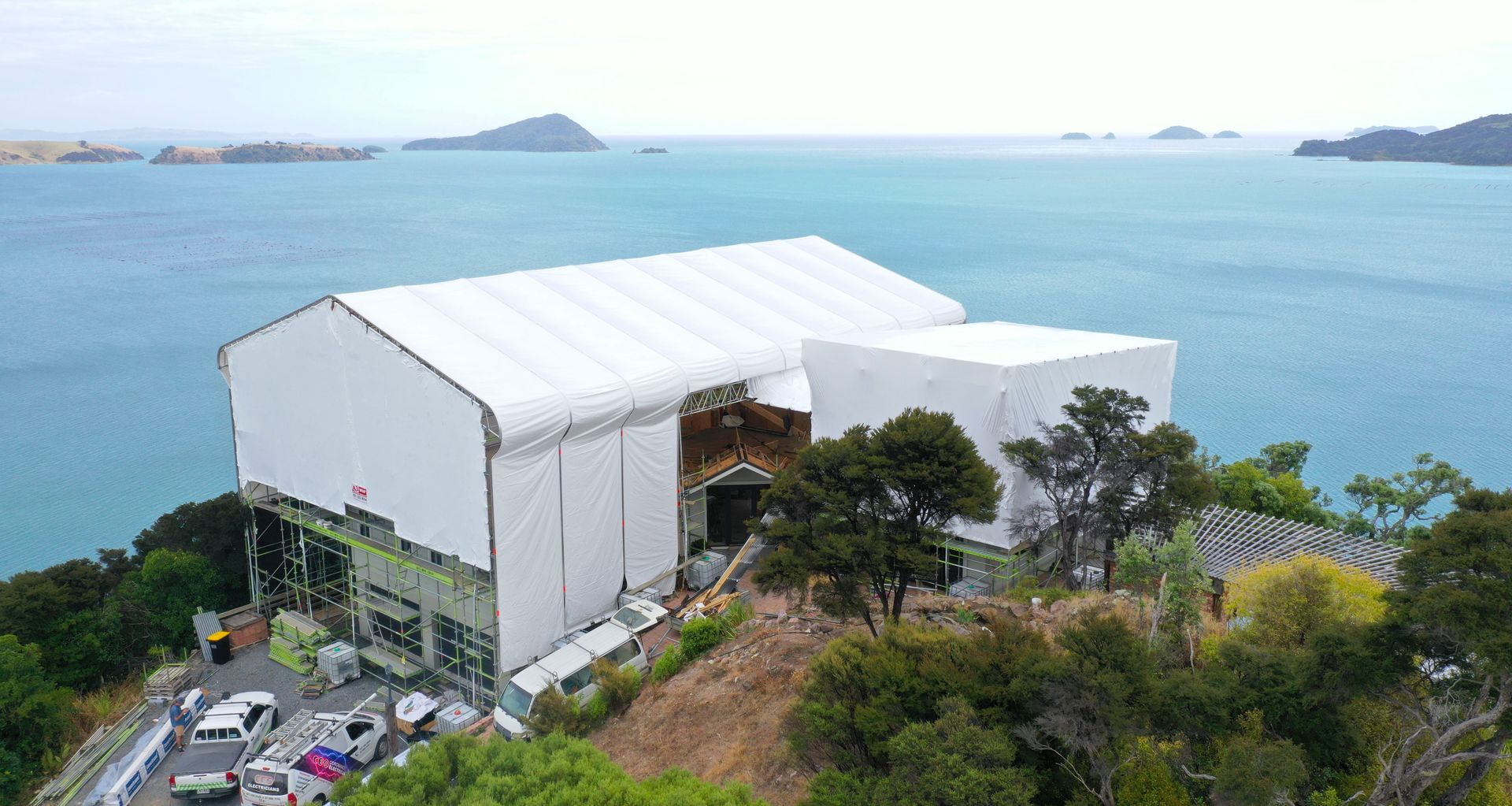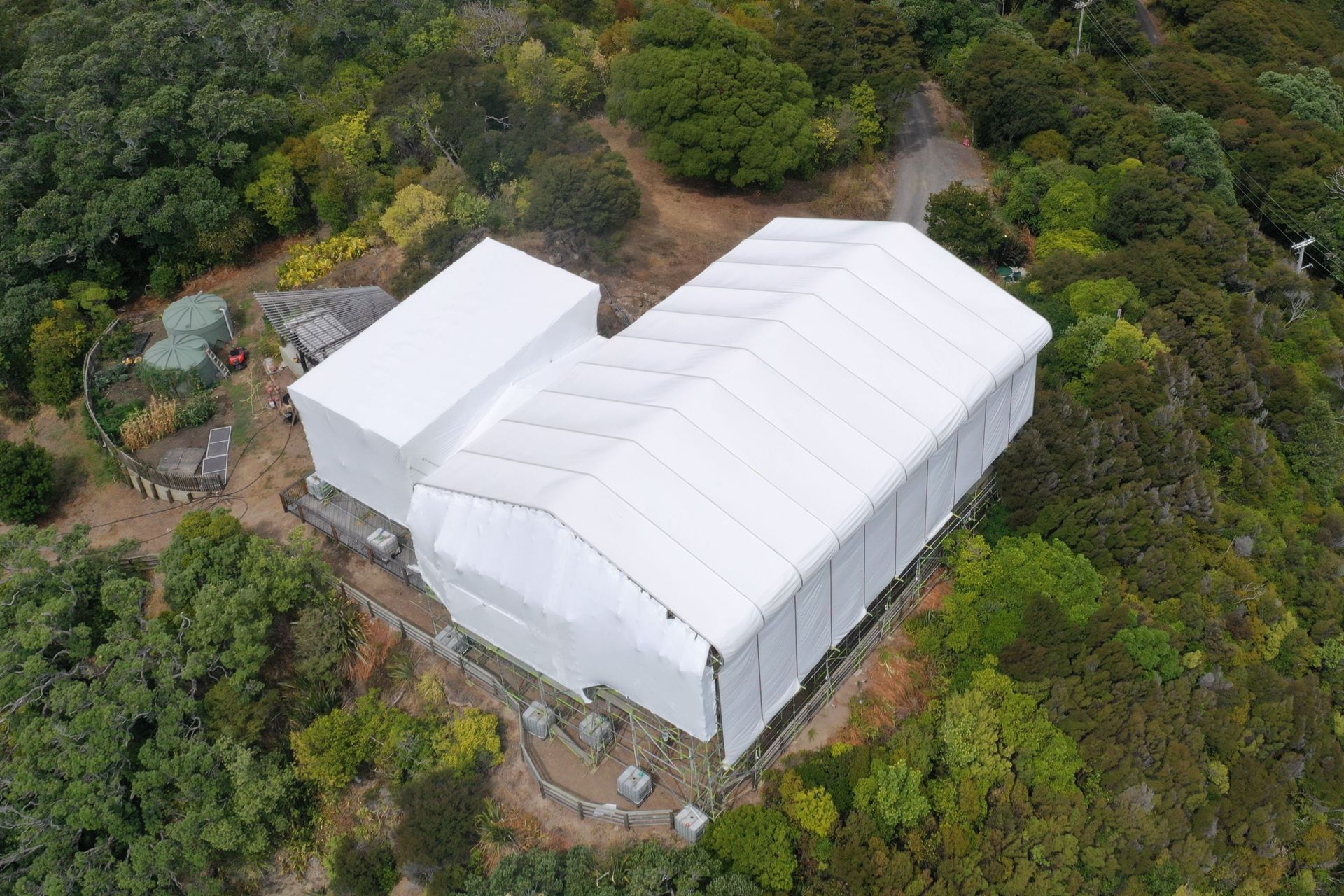"Green Construction" Temporary Roof or Wrap System

Up until recently, shrink wrapping was considered the most effective way to protect and cover buildings or provide a temporary roofing solution. It provides a complete weatherproof barrier for construction projects and ensures projects complete on time without weather related delays.
But one of the most negative impacts shrink-wrap has on the environment is that it takes up a lot of space and there is potential for a large amount of shrink-wrap to end up in landfills. Once in a landfill, the non-biodegradable shrink-wrap will take up space without ever breaking down in the soil. While it is pleasing to see some recycling initiatives are under way in larger centres, maybe it is time to take personal responsibility and find an alternative solution to reduce single-use shrink-wrap usage at a business by business level.
After a trip through the Layher plant factory in Germany during 2019, Richard and Diane Vetter of Peninsula Roofing and Scaffolding, invested in a Layher Keder (PVC Sheet Tarpaulin) Roof System to provide another arm to existing scaffolding capabilities and to find a green construction solution to help reduce the amount of single-use shrinkwrap material being used in their business.
The Layher Keder Roof System, is constructed from lightweight aluminium and is a robust, portable and temporary weather protection system which can be used in residential, commercial and eventing projects. Possible applications vary widely and include covering buildings while extra storeys are added, repair of roof trusses and re-roofing, weatherproofing for construction sites, and many other possible uses at events and festivals.
With the option of constructing a mono or double pitched roof, there is the ability to span an area of 18 metres wide by 24 metres deep. Reassuringly the system also offers three safer assembly methodologies, helping to minimise the risk of fall from heights.
The key to the system’s rapid assembly is its claw connection, truss stiffeners and PVC roof and wall sheet tarpaulin installation. The PVC roof and wall tarpaulins are inserted safely (by being pulled through a track). There is no need for personnel to work on top of the structure.
These roof and wall tarpaulins are environmentally friendly, as they are reusable and reduce the need for 'single-use' shrink wrap plastic sheeting.
When used with a Layher Staging System, you can create a covered stage as shown below. Erected in modules of 2.5m x 2m, total stage area of 240m² can be built. The stage decks are constructed from engineered aluminium framing with non-slip plywood panels which means they are lightweight, strong and fast to setup/pack down and easy to reconfigure (if needed).

The Layher Keder (PVC sheet tarpaulin) Roof System system is modern and visually appealing, making it a great option for applications where site aesthetics are an important factor.

Case Study: Encapsulating a house using Layer Keder (PVC Sheet Tarpaulin) Roof System
Undertaking a re-roof on a prominent headland, the builder required the ability to work on the total re-roof area all at once. Layer Keder (PVC Sheet Tarpaulin) Roof System provided a solution that not only enclosed the main house structure, securing against strong winds (this extra high wind zone was calculated, to require 50 tonnes of ballast!), but also provided clear access to the full roof area. The use of shrinkwrap on the project was minimised.

At the completion of the re-roof work, the PVC tarpaulins are rolled up and can be used again!
This is made possible by the rolled PVC sheeting with sealing beads (Keder) on both sides easily sliding in and out of an extrusion with a luff groove – known as keder track.
Green construction is to build responsibly, reduce waste, and help preserve the environment. It is an “earth-friendly” alternative to current construction processes. The re-useable nature of the Layher Keder (PVC Sheet Tarpaulin) Roof System enables us to lead the way, pioneering waste reducing "green construction" in the scaffolding industry, by replacing single-use materials with reusable materials.
